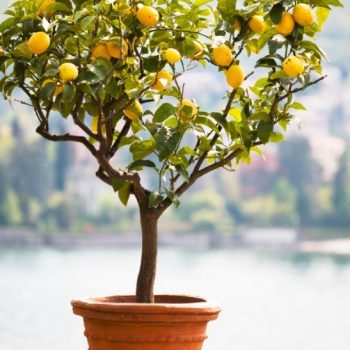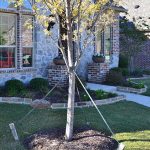 Have you ever participated in neighborhood tree planting, or planted one in your own yard? If not, you’re missing out on a great way to interact with nature. Whether this is a new experience or it’s simply been awhile since you’ve planted a tree, we’ve got some great pointers to get you started.
Have you ever participated in neighborhood tree planting, or planted one in your own yard? If not, you’re missing out on a great way to interact with nature. Whether this is a new experience or it’s simply been awhile since you’ve planted a tree, we’ve got some great pointers to get you started.
Decide Where You’re Going to Plant
Trees are a significant commitment, as you need to envision how well it will fare in the chosen location once it’s fully grown. Think about the area’s proximity to the yard, fence, sewage line, and nearby power lines.
If planting in the front, you’ll want to consider the root system and how close it may get to the road or sidewalk as it expands. Pre-existing shade cover is also a consideration with some species. Before you plant, be sure you choose a location that will remain safe and attractive as the tree matures.
More info on how Ryno Lawn Care can assist with your landscaping projects!
Topography
In addition to other location-related concerns, the lay of the land is a critical aspect of the growing tree’s success. Make sure the land isn’t too uneven, or you run the risk of erosion during heavy rainfall. If you choose a sloped area, your best bet is to plant a tree whose root system is developed enough to take hold of the soil.
Climate
Be sure you consider your local climate when choosing which species of tree to plant. Annual rainfall, humidity, and seasonal temperature changes all play a role in how well certain trees will do in your area.
Your local lawn care company can help you choose trees that are best for your area.
Timing
Based on your local climate and the type of tree you select, there will be an optimal time of year to plant it in the ground. Do some research online or consult one of our helpful professionals to find out when you should start digging, to ensure that your new tree will easily take root and get the right nourishment.
Digging and Ground Placement
To successfully plant a seedling or sapling, the width and depth of your hole should both be about the same as the length of its root system. What is the difference between the two? Both are young trees, but a sapling will be around a meter high measuring from the bottom of the trunk (not counting the roots), while saplings are smaller.
Once planted, pack the roots in with fresh soil that has the proper pH for the species you selected. Again, this information can be found online, or provided by one of our experts.
Conclusion
- Choosing where to plant a tree is important not only to the health of the tree, but to your own safety. Do your homework to be sure you’re steering clear of sewage, power lines, and large barriers that might conflict with a growing root system.
- Consider your local climate and weather patterns when choosing which breed to plant.
- Different seedlings and saplings thrive at different times of year. Ask an expert about which season is best to plant the tree(s) you’ve chosen.
- Make sure you’ve got plenty of space in your yard before digging, as a new tree needs the depth and width equaling the size of its root system. It’s also important to check the soil’s pH for appropriate nutrients.
 These are the basics of successfully planting a new tree. Once it’s been planted, be sure you’ve familiarized yourself with its specific needs to ensure that it stays healthy. The best thing about planting trees on your property or in your neighborhood is that they will bring joy and beauty for generations to come.
These are the basics of successfully planting a new tree. Once it’s been planted, be sure you’ve familiarized yourself with its specific needs to ensure that it stays healthy. The best thing about planting trees on your property or in your neighborhood is that they will bring joy and beauty for generations to come.

